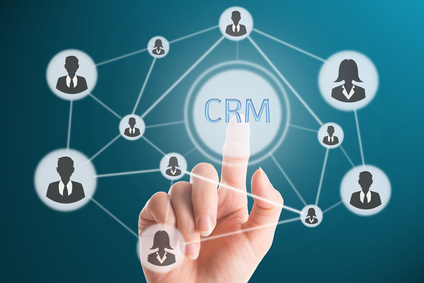So…how long should an organization keep prospects, lapsed donors, and inactive volunteers in their database?
Ahhhh. That’s a question that I get asked often. And the answer to this one is…
Pretty much forever.

I’ve witnessed plenty of resurrections over time, where lapsed donors “come back from the dead.” I can even tell you all about how one subscriber resurrected a donor after 24 years! Crazy, but true.
So when getting to the heart of the matter and exploring this territory, I usually encourage folks to ask themselves a few questions.
- Where did the names come from?
- When (if ever) was your last engagement effort?
- How have you been communicating the individual donors in question? Email? Direct mail?
- What does your past stewardship look like?
These points are a great place to begin, but when you really dive deep into it, you’ll find you can come up with some additional questions of your own. The kinds of questions that are unique to your organization, your donors, and just exactly what you’re looking at in your database. Like anything involved in the ins and outs of nonprofit life, there are no one-size-fits-all approaches. But you already knew that.
And yet another critical question, which also ties into the prospects/lapsed donors/inactive volunteers question, is really simple. If you have any tie to nonprofit work whatsoever, you’ve probably asked, at one point or another…
Why do donors stop giving in the first place?
There are practically dozens of reasons why a donor decides to stop giving. They die, life gets in the way and your organization simply fell off their radar, they gave a one-time gift to honor a friend or a family member, they were a one-time attendee at a gala you hosted…
The realm of possibilities is vast.
But there’s also a chance that you failed to effectively communicate to them the impact of the gift they made, whether it was one gift or five or twelve.
There’s not only a solution for better communication, there’s a solution that can sort out the messy confusion of the prospects, lapses, and inactives. One word, lots of possibilities. Segmentation.
Believe it or not, even the smallest donor base can benefit from segmentation.
If you’ve never done this before, the time to begin is now. Especially with your year-end fundraising fast approaching.
Steven Shattuck, Chief Engagement Officer of Bloomerang, offers some sage advice: “Don’t delete. Segment.
Isolate donors who haven’t given in two years and do something different with them.
– Invest in an NCOA (they might have moved) – you can save postage cost on undelivered mail
– Invest in Deceased Suppression Processing (they might have died) – you can save postage cost on undelivered mail and/or stop annoying a surviving relative who is getting mail addressed to their dead loved one (and turn it into a stewardship opportunity by offering condolences to them)
– Send a lapsed donor survey (“did we do something wrong?”)
– Call them and simply say thank you for their support (voicemails are okay)
Send them a special mailing or email that talks about all the great things their gift has done in the past (success stories, case studies, program impact!)”
Longtime subscriber and friend, Leslie White Clay, holds the distinct honor of being the only development professional I know of to bring back a 24-year lapsed donor. Yes, you’ve read that right. Leslie resurrected a 24-year lapsed donor (I have a daughter who’s 24!). Leslie explains,
“Too often, a donor stops giving because of reasons other than they don’t “like” your organization or your mission anymore. Things change….maybe they switched jobs or lost a job and don’t have as much disposable income or had one of many numerous life changes. Maybe they gave for a few years, then stopped and you stopped mailing to them and then they just forgot. Keep your donors in mind – let them know you haven’t forgotten them. Send them a copy of the annual report with a note that says “your past gifts helped make all this possible”, continue to invite them to events. I have had donors re-engage after 24 years of not giving. You never know. Do I ever stop soliciting from someone – sometimes – mostly those donors who have given once through a special event because they participated on someone’s team. But not someone who has given two or more gifts.”
Absorb Steven and Leslie’s words of wisdom on segmentation, and put them to good use. And read these past articles, too…
“Dear Anonymous Stranger”…Segmentation secrets for your nonprofit direct mail appeal
Six Ways to Gear Up for Your Year-End Fundraising
Think in terms of WHY
As you begin preparing your donor database for your year-end campaign, stop thinking solely in terms of size of gifts or LYBUNTS and SYBUNTS. Think, instead, in terms of your donors’ reasons for giving.
What motivates them? What moves and inspires them? What makes them tick?
“Dear Anonymous Stranger”…Segmentation secrets for your nonprofit direct mail appeal

















 I can’t wait to meet with you personally.
I can’t wait to meet with you personally.
Comments on this entry are closed.